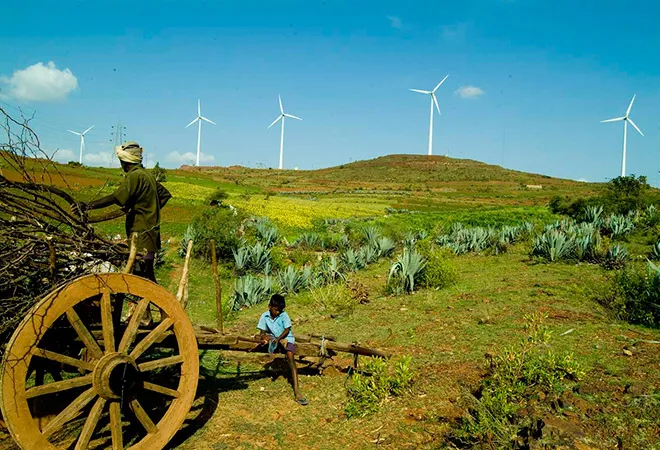Forty-three years ago in October 1973, the US was hit hard by an oil shock which echoes until this day. For U.S.’s support for Israel in the Arab-Israel war of 1973, the Organization of Arab Exporting Countries (OAPEC) imposed an oil embargo on this country, along with the Netherlands and Canada and reduced oil production. While the U.S. continued to import some crude oil from Arab countries, its price shoot up three-fold in less than a year from $4 a barrel during the last quarter of 1973 to an average price of $12.50 a barrel in 1974. Such embargo contributed to major economic downturn in the U.S. According to author and oil analyst, Daniel Yergin, “…the oil crisis challenged America’s position in the world, polarized its politics at home and shook the country’s confidence.
This oil embargo forced the U.S. to create Strategic Petroleum Reserve / Strategic Oil Reserve (SPR) in 1975, which as of January 20, 2017, holds 695.1 million barrels (bbls) of crude oil. This constitute 266.1 million bbls of sweet crude and 429 million bbls of sour crude.
A Strategic Oil Reserve is a volume of crude oil placed in underground storage and excluded from country’s proved oil reserves. These reserves are mainly maintained by countries that must depend on imports to meet their demand for unforeseen emergencies that could disrupt supplies.
This embargo also fostered International Energy Agency to develop plans and measures for emergency responses to energy crises. Strategic stocks, which are one of the policies included in IEA’s program, its members follow the norm of holding oil stocks equivalent to 90 days of net oil import. India, which imports 80 per cent of its crude oil demand, accounting for 59 per cent from the Middle East (in 2015) too have approved their SPR program in January 2004. India’s Integrated Energy Policy of 2006 have recommended, “to maintain a reserve, equivalent to 90 days of oil imports for strategic cum-buffer stock purposes…which can be used to address short-term price volatility. Operating the strategic/buffer reserves in cooperation with other countries who maintain such reserves could also increase their effectiveness.”
However, while the risks of possible supply disruptions in oil rich Middle East region from where India’s more than half of oil import needs are taken care of, it also initiated to diversify its crude imports from countries like Africa and Latin America. But it was the week global oil prices, which worked as shot in the arm to India’s SPR program. Therefore, despite the Vienna Deal aimed at rebalancing oil markets with consequent rise in the oil prices and India’s planned oil imports cuts by half by 2030 seems to yield no visible results.
Buoyed by global low oil prices and removal of sanctions on Iran has prompted India to increase its oil imports. India’s potential oil demand resulting from increased economic activities which are supported by several key initiatives such as Make in India, will keep its urge for oil increasingly met from imports. 2017 edition of BP Statistical Review of World Energy has already projected India’s oil consumption growth to be the fastest among all major economies by 2035.
Moreover, emerging geopolitics around the OPEC member countries to squeeze oil production alongside their face-off with U.S. oil producers, particularly after U.S. President Donald Trump’s frightful fossil fuel fantasy, amidst recent banning travel from seven Muslim-majority countries only heightens the tension around global oil security. This is again in addition to likely war like scenario between the U.S. and China, particularly with respect to territorial rights in South China Sea (SCS) will prompt India to stick to its SPR plans.
Proactively, China, with increased tensions in SCS have capitalized on its oil stockpiling goals. According to Bloomberg’s ship-tracking data, China has already stockpiled 787,000 barrels a day in the first quarter of 2016, the highest stockpiling rate since 2014.
All these developments hints towards oil supply disruptions as also to a risk of surge in global oil prices, for which India should now be more prepared than ever, given its rising global crude oil demand.
In this regard, to further strengthen its SPR program, India’s Strategic Petroleum Reserves Limited (ISPRL) has signed an agreement on oil storage and management with UAE’s Abu Dhabi National Oil Company (ADNOC). The agreement mandated to store crude oil for emergency needs, covers the storage of 5.86 million barrels of ADNOC crude oil in Mangalore underground oil storage facilities in Karnataka. Half of the stockpile of 1.5 million tonnes (mt) constituting 0.75 mt with be stocked and hired by ADNOC, while 0.5 mt belonging to India can be used during emergencies. This covenant, thus aims to establish a framework for the storage of crude oil by Abu Dhabi National Oil Company in India and to further strengthen the strategic relationship between the two countries in the field of energy.
Presently, under Phase – I program of SPR, storage of 5.33 million tons of crude oil at three locations, namely, Vishakhapatnam (1.33 million tons), Mangalore (1.50 million tons) and Padur (2.5 million tons) have been created. India is now seeking finance the Phase – II of its SPR to speed up construction and filling of its SPR. Under this phase, four more caverns are to be established in Chandikhol, Bikaner, Rajkot and Padur of which detailed feasibility report has been prepared. A token amount of Rs. 1 crore has also been allocated to ISPRL as Budget estimate for 2016-17.
Besides the case for emergency, SPR in India can offer a great business opportunity by creation of major hub in South and South East Asia for storage of crude. This calls for serious look on development and expansion of hydrocarbon value chain through investments in required infrastructure. With the provision of sufficient SPR in place, India would help West Asian refiners to reduce their freight costs for both South Asia and South East Asia.
India shall also reap the benefits of volatile markets by releasing and recharging its SPR inventories in case of rise and fall in global crude prices, respectively.
Thus, India can gain both economically and politically by protecting itself for a future oil embargo while offering a hedge against its economic impact.
This commentary originally appeared in Energy Infra Post.
The views expressed above belong to the author(s). ORF research and analyses now available on Telegram! Click here to access our curated content — blogs, longforms and interviews.




 PREV
PREV


